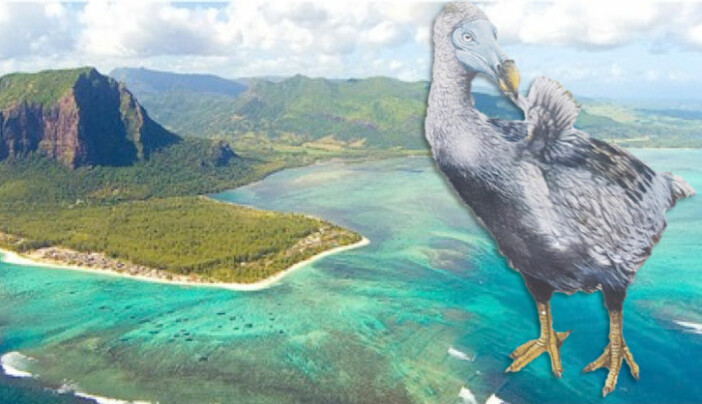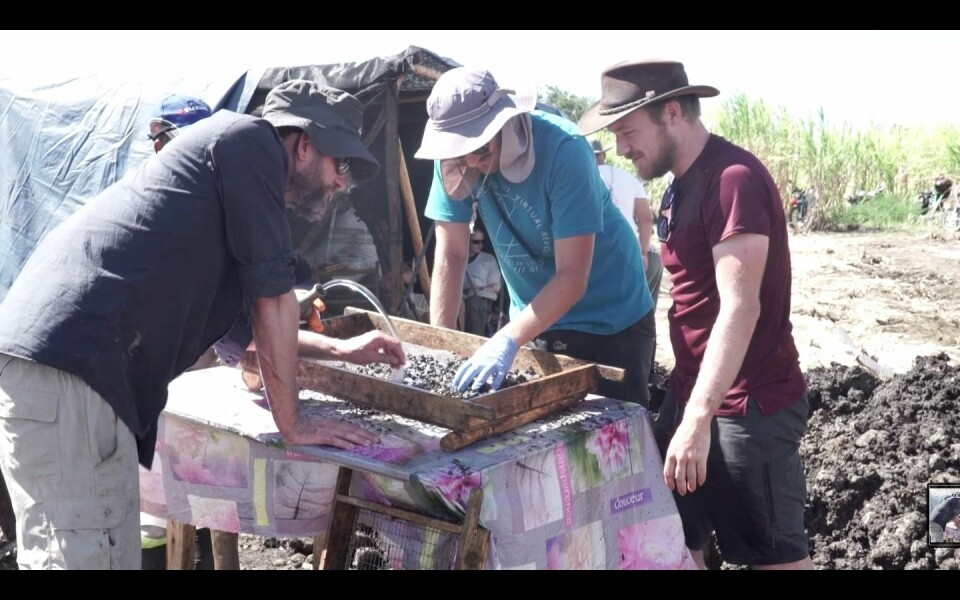Researchers' Zone:

Daily life of the Dodo – tales from a 12,000 year old swamp full of bones
Excavations in Mauritius has led researchers to a closer understanding of the mythical extinct Dodo.
It all began with an excited phone call in late 2015. One of us had been reading a 180 years old report from the Society of the Natural History of Mauritius, a small island state east of Madagascar, and had come across an interesting sentence.
In 1834 the author, the French zoologist Julien Desjardins, wrote about a swamp in Mauritius “so full of extinct animals that you could just stick your hand in the water and find their bones” (my translation).
The swamp was long forgotten but now – 180 years later – we were determined to locate it.
Together with Michael Borregaard I became part of a small team consisting of local and international researchers, joined by the Mauritius’ National Heritage Fund and landowner Constance Group.
Armed with excavation machines and shovels we went to many different lakes without success. Then, in a sugar cane field next to the road, we came across a small, dried-up swamp – and it was full of bones!

The mythical Dodo
A few of the bones we found belonged to Dodos, large birds that lost the ability to fly. They were easy prey and hunted down by hungry sailors and the rats that came with their ships. The last Dodo probably died sometime between 1662 and 1693 – less than a hundred years after humans first colonized the island in 1598. The species now serves as a symbol of extinction.
The dodo was described in ships logs and journals that included some drawings. These drawings were later copied and exaggerated and gave us the impression that the Dodo was a very fat bird, which it was not.
What we do think we know is that the ancestors of the Dodos were pigeons that had become large and unable to fly.
They stood about one meter tall, weighed about 16 kg and had a very large beak that was probably used to eat fruits. They reared only one chick at a time. Dodos looked quite odd and there is no animal like it left today.
There are also no stuffed Dodos left to see what they really looked like, they went extinct before they could be described properly. This is part of why the Dodo has become such a mystery.
Even though more has been written about the Dodo than any other extinct bird, we still know very little about their lives – and about the lives of other animals it once shared the island with, for that matter.
Bones from giant tortoises, owls and fruit bats
It seemed we had hit the jackpot with the bone rich dried-up swamp, so this year we returned to do a proper excavation. To our great surprise, the swamp turned out to be 12,000 years old.
Apart from a few sites in Madagascar and Aldabra, this makes it the oldest excavation site in the Western Indian Ocean. This allows us to look further back in Mauritius’ natural history than ever before, to a time long before humans arrived and transformed the island forever.
How many bones did we find? We do not know for sure because many bones are fragmented, but we have so far calculated that the bone-rich layer contains about 600 bone pieces per cubic meter and we found about 2000 pieces!
Most of the bones are quite large and turned out to be from two types of giant tortoises. Among them were also remains of the giant skink (a type of lizard), Dodos (as already mentioned), a fruit bat and an owl that specialized in hunting lizards to name a few.
Limestone preserves the bones
But why did we only find these bones in this area, and not in the other places we have been digging? Excavation leader Julian Hume from the Natural History Museum of London thinks that the answer lies in having the right conditions for preservation of the bones.
It is all about the limestone and lime-rich mud in the area. It makes the ground less acidic and because of this the bones have not dissolved like in the other locations, is his explanation.
Beneath the limestone, we found peat with remains of plants such as seeds and flower pollen. This helps us reconstruct what the area used to look like. It is now a small, dry lake in a sugarcane field but it used to be a wet forest swamp.
We know this because we found seeds of the Dodo tree that now only grows in the last remnants of wet forest on the island. Dodo trees require such an environment to be able to grow. The plants in the peat can also give us an idea about the diets of the Dodos and tortoises.
Both Dodos and tortoises used to eat fruits, which helped plants to spread their seeds. Because the animals were large, they were able to swallow even large fruits. Now that they are extinct, the plants with the largest fruits are at risk of going extinct too because there is no large animal left that can swallow and disperse their seeds.
The shadow of extinction is long, the animals have been gone for about 300 years but we still have to deal with the consequences. This is not only the case on Mauritius but for islands all over the world that have lost their original inhabitants.

Our hope: Restoration of the area to its pre-human history
We hope the bones and plant remains will tell us about the consequences of human caused extinctions but also help us understand how the forest has changed over the last 12,000 years, following climate change and heavy cyclone activity on the island.
For now, the excavation pits have been closed, awaiting our return in the next few years.
We are still analyzing the data and writing up our initial findings for scientific publication and we will determine what to focus on next time.
The bones will remain on the island and we look forward to continue to work together with the Mauritian people and share our findings.
In the future, we would love to see the area restored as an educational example of what island life was like 12,000 years ago – sadly without the Dodos, they are gone forever.
Read the Danish version of this article at Forskerzonen on Videnskab.dk.
References:








